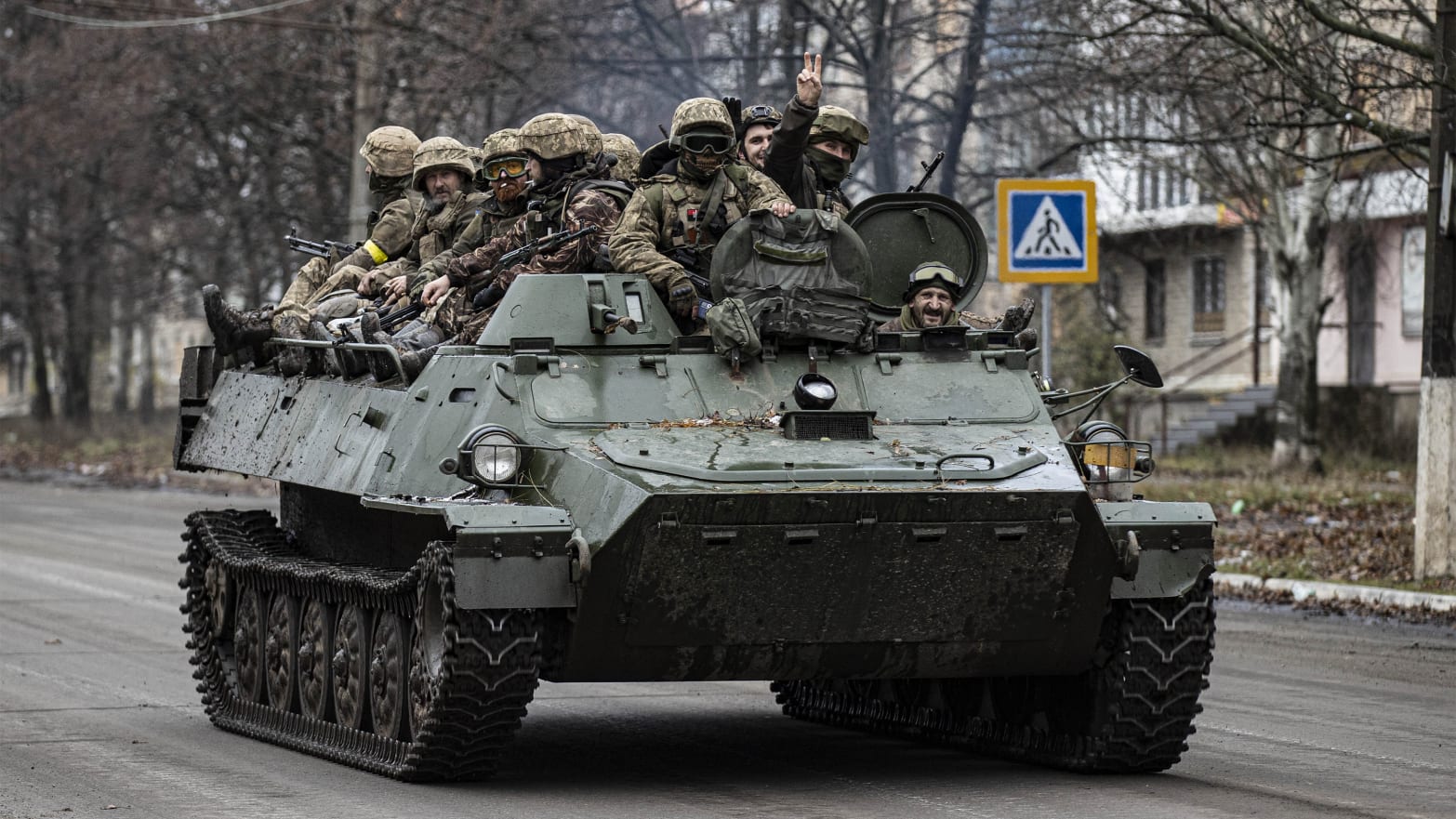The war in Ukraine isn’t going the way Russian President Vladimir Putin expected. And he’s certainly not the only one who was caught by surprise—the U.S. expected a rapid Russian success, with the Kremlin’s tanks inside Kyiv within days.
Many U.S. officials from the CIA, the Pentagon, and the White House believed Russia would quickly conquer Ukraine when it invaded last February. But Ukraine mounted an effective defense, and the Russian forces have retreated in some areas after ferocious counter-attacks. The outcome of the war hangs by a thread, and the U.S. was simply not expecting to find itself involved in a major international conflict that could go on for years.
Former military officials and intel insiders have told The Daily Beast that reviews are underway after failures in human intelligence and “lethargic” analysis led to warped predictions.
The misjudgment in Washington, D.C., was near-total. The U.S. did accurately warn that Putin’s threat of invasion was real, while some intel agencies—including those in Kyiv—sought to play down the likelihood of all-out war, but after that the biggest land conflict in Europe since World War II has confounded the world’s most extensive and costly intelligence agencies right here in the U.S.
The Ukrainians were clear from the outset that they would fight off invaders from the East with the same brutal dedication that saw Finland defeat the USSR in the infamous Winter War of 1939. So what went wrong back at the intel offices in Virginia and D.C.? Why did the U.S. not take them seriously enough? And was their analysis of Russia’s decrepit and weary army so badly out of date?
In March, the odds seemed heavily stacked against Ukraine. At the start of the war, Russia had about 900,000 active military personnel across its forces, compared with Ukraine's 196,600. But a massive influx of Western equipment and a stronger-than-expected Ukrainian offense has surprised observers.
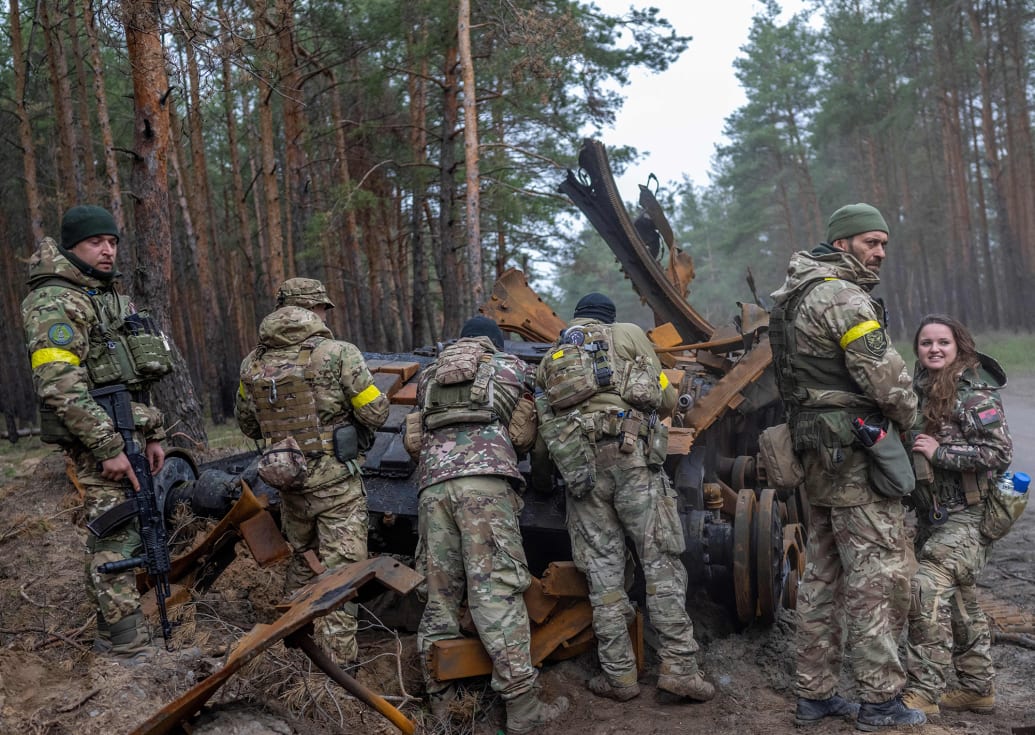
Ukrainian soldiers and volunteer fighters inspect a destroyed Russian tank in an undisclosed location, eastern Ukraine on Nov. 10, 2022.
Bulent Kilic/AFP via Getty Images
“I, along with many other people, misjudged the Russian military capabilities before this war began. I thought that they were much better prepared for a war like this,” retired U.S. Army Brigadier General Kevin Ryan said in an interview. “This is a high-intensity war that they hoped would be over soon.”
Ryan has been closely watching the Russian military rebuild after the disintegration of the Soviet Union. From 1998 to 2000, he served as senior regional director for Slavic States in the Office of Secretary of Defense and, from 2001 to 2003, as defense attaché to Russia.
“I think there’s a very real tendency to overestimate the capability of an adversary, not just the Russians, or the Chinese or anybody else,” he said.
Ryan said that Russia invested heavily in modern precision weapons like cruise missiles in recent years. But the problem is that the Russians didn’t have sufficiently trained troops to carry out attacks in Ukraine.
When Russia began building up its forces around the borders of Ukraine in February, “I expected that those forces would work so that they would accomplish their goal not because the Ukrainians couldn't fight but because the Russians were overwhelming with size,” Ryan said. “And that turned out to be wrong.”
Jeffrey Pryce, a former senior official in the office of the U.S. Secretary of Defense, where he negotiated nuclear disarmament agreements with Russia, Ukraine, Belarus, and Kazakhstan, said in an interview that Russia “had a huge amount” of combat power but “used it very, very badly.”
One fundamental problem for Russia was that it has failed to achieve air superiority in Ukraine, leaving its troops open to attack, Pryce said. “Even if they took an airfield, they didn’t provide air support to a very light unit, and then that unit got decimated,” he added.
Figuring out how a conflict will unfold is no easy task. In an interview, Susan Cho, a former U.S. Army officer who worked in intelligence, said that battles are not just a matter of weapons and personnel.
“There are other factors that play a huge role in determining the outcome of a battle, which include leadership, tactics, tempo, and troop morale—and these factors are much more difficult to estimate prior to an actual war,” Cho added.
The failure by U.S. and allied intelligence agencies to predict how the war in Ukraine would work out is hardly unique, pointed out Hugh Gusterson, an expert in nuclear and drone warfare and professor at the University of British Columbia’s School of Public Policy and Global Affairs.
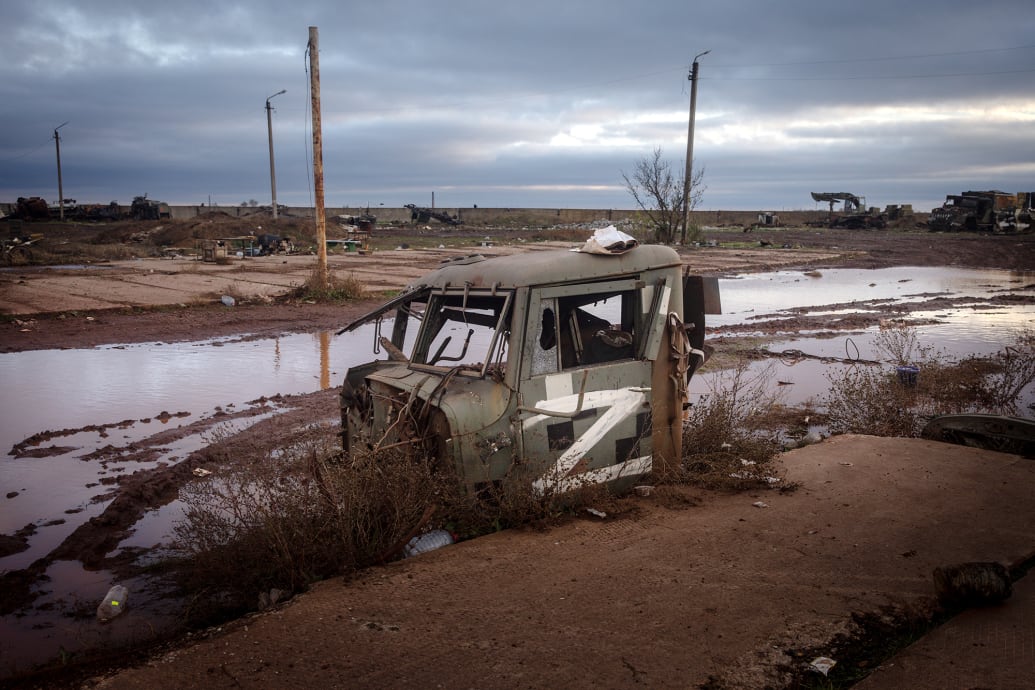
Part of a destroyed Russian military vehicle is seen at a base used by Russian forces outside Kherson International Airport on Nov. 19, 2022 in Kherson, Ukraine.
Chris McGrath/Getty Images
“Russian intelligence also got Ukraine wrong, repeating their disastrous errors back in 1979 when they told [Soviet leader Leonid] Brezhnev that Soviet soldiers would be welcomed by Afghans (who proceeded to kill 15,000 Soviet soldiers before the Soviet Union gave up),” he added. “And U.S. intelligence failed to foresee the strength of the insurgencies in Iraq and Afghanistan that defeated them.”
Gusterson said predictions about future wars are usually based on the experience of previous wars, but new wars are won by learning from past campaigns and innovating. “In this war, for example, the Ukrainians have made innovative use of drones—drones bought from Turkey and off-the-shelf commercial drones—but who could have predicted that?” he added.
Also, Gusterson said intelligence agencies tend to see things from a distance. “They count weapons systems and soldiers under arms, and they repeat military judgments about the relative effectiveness of different weapons systems,” he added. “But wars are not just a contest between weapons systems and armies,” he said. “They are also won by tactical innovation, brilliant commanders, morale, stamina, and civilian solidarity.”
According to retired Lieutenant Colonel Hunter Ripley Rawlings IV, bureaucracy in the U.S. defense establishment may have contributed to the misjudgment of Russian forces.
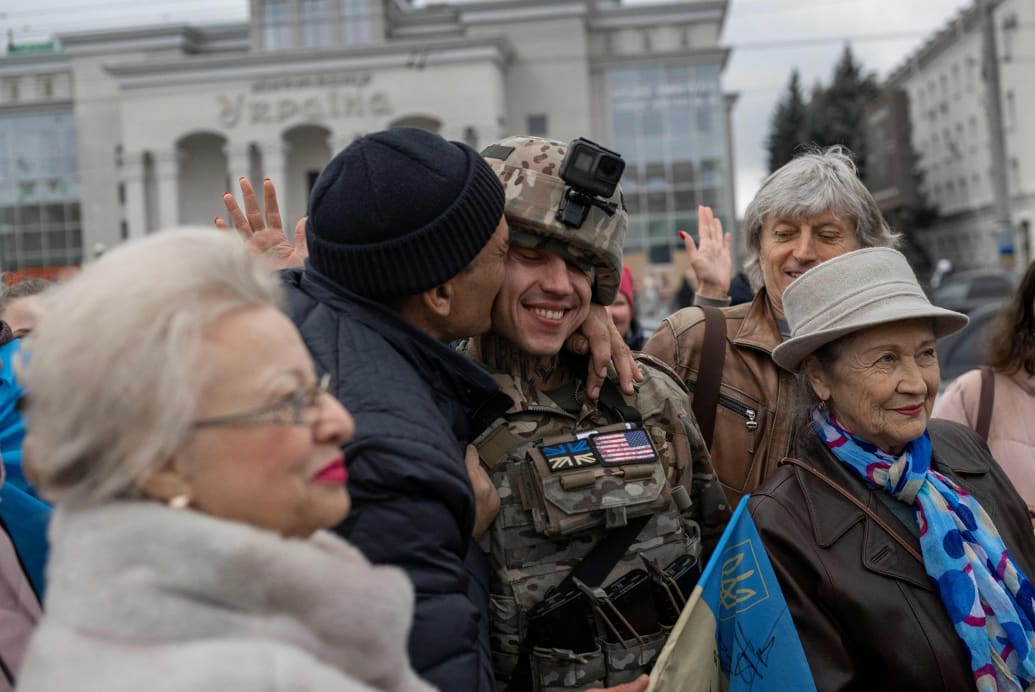
A man hugs a Ukrainian soldier as local residents gather to celebrate the liberation of Kherson, on Nov. 13, 2022.
AFP via Getty Images
“Having worked in the Pentagon, what happens is that people typically get lethargic, that here’s the same intelligence over and over again,” said Ripley, who now runs a nonprofit that provides equipment to Ukrainian troops. “It becomes kind of the drone in the background.”
Rawlings said that it’s unclear what would have been the material benefit if U.S. intelligence had foreseen the strength of the Russian invaders.
“What would we do with that information?” he added. “Well, we could galvanize and strengthen our allies. We could certainly place the 18th Airborne Corps into Poland, which we’ve done since the invasion commenced. But we weren’t going to defend Ukraine. We weren’t going to send men and tanks and materiel into Ukraine to defend them directly. They’ve become stronger allies, but I don’t know that we even saw them as allies. We saw them as on the fence.”
Rawlings said that U.S. intelligence underestimated the importance that drones would play in the war in Ukraine, leaving the Ukrainian forces without enough drones. To keep the supply of drones flowing, his nonprofit has been trying to send Western commercial drones to Ukraine through its neighbor of Poland.
“Poland has been one of our greatest allies and one of our biggest obstacles,” he said. “For a time, they were stopping anything that was remote-controlled.”
Laurence Pfeiffer, a longtime U.S. intelligence community insider whose career included stints as senior director of the White House Situation Room and chief of staff to Director of the Central Intelligence Agency Michael V. Hayden, said the situation in Ukraine “appears to be a kind of a combination of, of a misjudgment of Russian military capability as well as a misjudgment of Ukrainian will and resolve.”
Pfeiffer said that defense establishment bureaucracy was part of the problem. “Your average bureaucrat is going to get rewarded for being conservative in their estimates as opposed to the opposite,” he added. “In other words, there's a greater risk if I think that they can’t perform as capably as they’re advertising. So, therefore, the safer bet is to just go ahead and invest in a way that assumes that they have the capabilities that their advertising they have.”
Pryce said that there needs to be a reckoning on how the U.S. can better assess potential future conflicts.
“I’m sure that the intelligence community is engaging in a serious review of this,” he added “They’ve been asked by the Hill [to review the war in Ukraine], but they were engaged in it already. And so it's one of the things that the intelligence community does is they’re constantly assessing, self-critiquing, evaluating, how well they did and how they can do better. And so, you know, I have no doubt that they’re doing a very serious job.”
One aspect of the intel community’s failure, is that the emphasis in recent decades has shifted towards fighting terrorism rather than clashes with global powers, as a result there is simply not as much of an obsession at the Pentagon or in Langley with tracking exactly how a potential superpower adversary will perform on the battlefield.
“There’s no question that from the time of the 9/11 attacks, for some years thereafter, there was an extremely heavy focus on counterinsurgency or operations, and also, just because of the deployments to Iraq and Afghanistan, security policy and security resources are scarce,” Robert B. Murrett, a former senior intelligence official and vice admiral in the Navy, said in an interview. “And when you’re paying a lot of attention to one thing, it tends to degrade the amount of attention you’re paying to things like peer competitors.”
Russia inherited vast quantities of military supplies from the Soviet Union, but much of the equipment is outdated. Rawlings said that of the tanks in Russia’s vaunted First Guards Army, which is fighting in Ukraine, only about a quarter were modernized with modern night vision equipment and ballistic computers for accurate shooting.
“I was very surprised on the ground to see that it was that the Russian army was so far degraded in comparison with what I had expected,” he said.
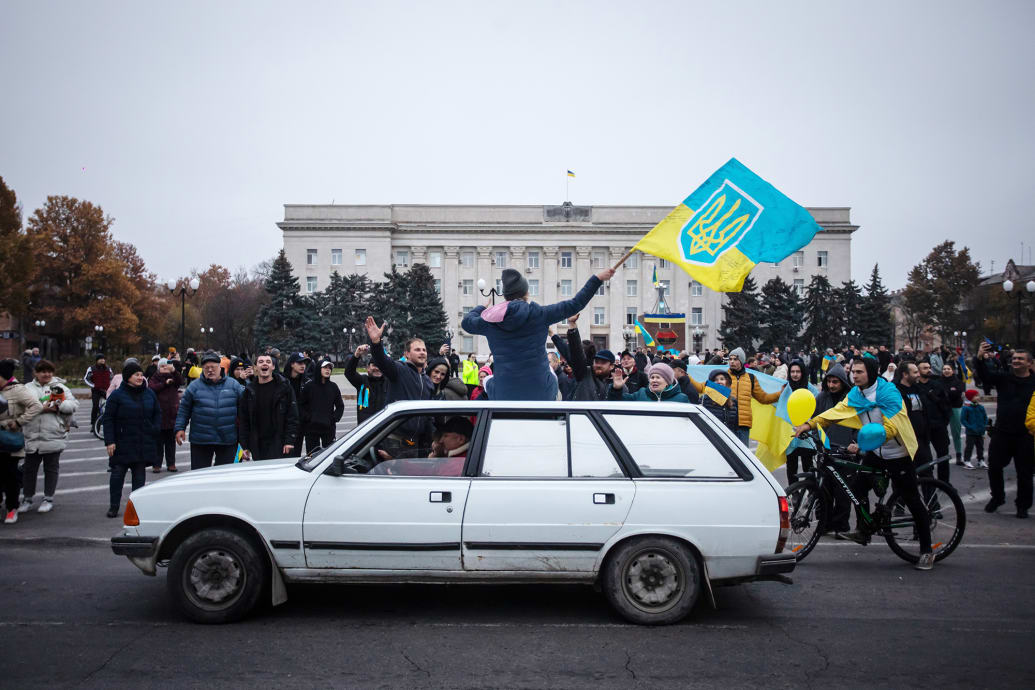
A woman with Ukrainian flag sitting on atop a car during the celebration of the city's liberation on Nov. 12, 2022 in Kherson, Ukraine.
Yevhenii Zavhorodnii/Global Images Ukraine via Getty Images
Rawlings pointed out that President Putin announced in 2016 that he was modernizing the armed forces and proposed new tanks and weapons. But he said that U.S. intelligence failed to grasp how poorly Russian troops would perform on the ground.
Putin “designed new uniforms for his people, which is a lot of pomp and circumstance, but typically harkens the fact that they’re trying to reinvigorate the personnel, and then made a big show of talking about how unit leaders had more autonomy. What we found out is that was the exact opposite.”
Rawlings, who travels regularly to Ukraine, said he has spoken to Ukrainian fighters who had been on the front and said they had never seen a Russian officer on the front line. The Russian officers “were so far removed from the conflict, that the only people that I've ever spoken to that ever talked to Russian officers were those that captured them, and they said those Russian officers were overwhelmed.”
With Russia making veiled threats about using nuclear weapons, intelligence agencies are scrambling to assess just how real the threat is. Also at issue is exactly how capable Russia’s nuclear forces are.
“I would like to think that there are a lot of people around D.C. right now completely recalibrating a lot of potentialities because of what we now know about the weakness of the Russian military,” Pfeiffer said. “I mean, they truly are appearing to be, you know, solely a nuclear power. And frankly, there’s a part of me that scratches my head and says, ‘If they’re this bad with everything else? Maybe they're pretty bad with their nuclear?’”
While fighting is still going on in Ukraine, many U.S. military officials are pointing to China as a potential threat. “China is looking at this war and they're seeing the same things we are,” Ryan said. They’re seeing a mistake. They’re seeing that they themselves probably anticipated the Russian military was going to be better and more successful than it did in the first. So they’re asking the same question, and they’re wondering what it is that we need to do differently.”
The U.S. needs to learn from lapses in Ukraine, said Stuart Kaufman, a professor of political science and international relations at the University of Delaware. The U.S. needs to rely less on technology to improve its intelligence assessments. “We’ve got great signals intelligence, and we’ve got great photo-reconnaissance,” he said. “What we need is more human intelligence to get at that the human side of military performance. That’s our weak spot.”

